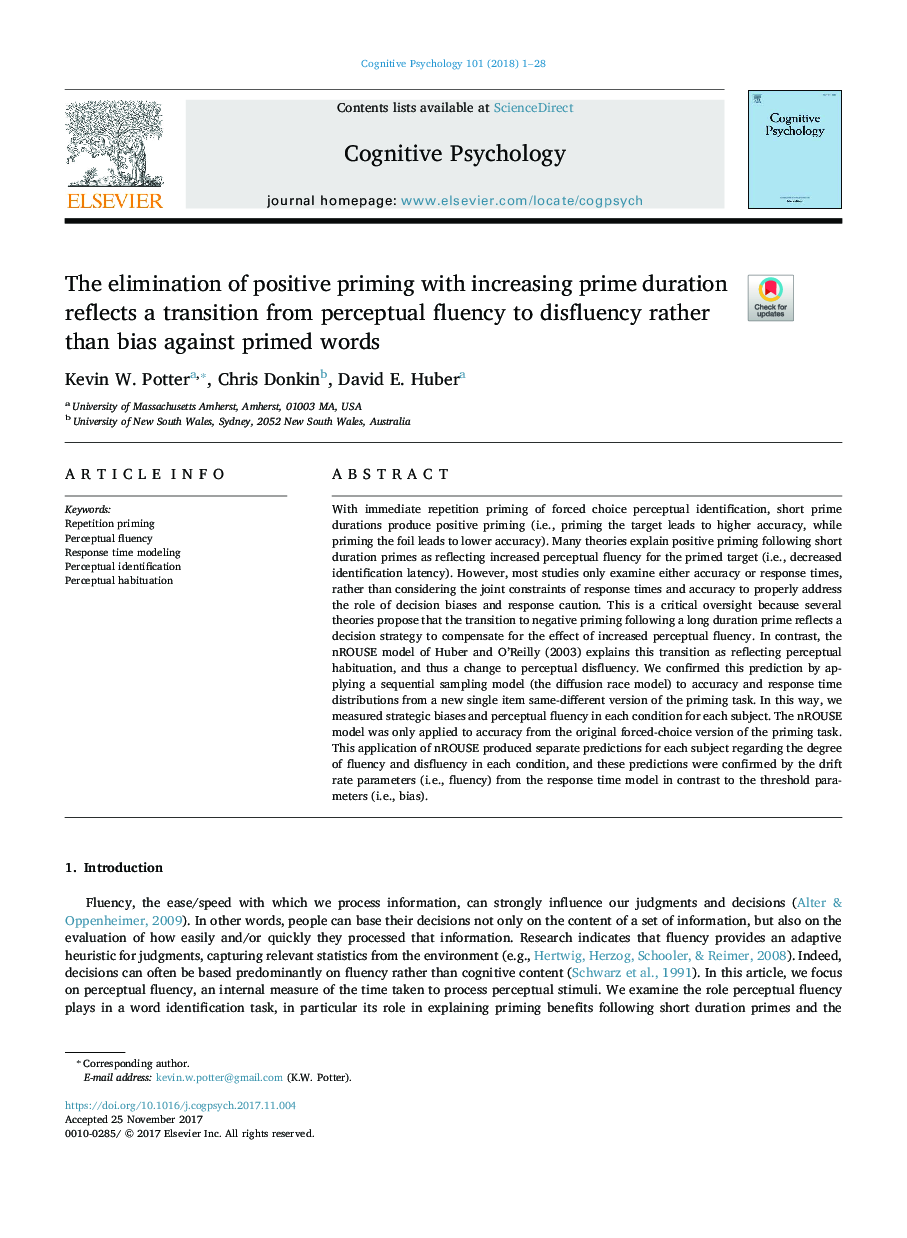| Article ID | Journal | Published Year | Pages | File Type |
|---|---|---|---|---|
| 7272656 | Cognitive Psychology | 2018 | 28 Pages |
Abstract
With immediate repetition priming of forced choice perceptual identification, short prime durations produce positive priming (i.e., priming the target leads to higher accuracy, while priming the foil leads to lower accuracy). Many theories explain positive priming following short duration primes as reflecting increased perceptual fluency for the primed target (i.e., decreased identification latency). However, most studies only examine either accuracy or response times, rather than considering the joint constraints of response times and accuracy to properly address the role of decision biases and response caution. This is a critical oversight because several theories propose that the transition to negative priming following a long duration prime reflects a decision strategy to compensate for the effect of increased perceptual fluency. In contrast, the nROUSE model of Huber and O'Reilly (2003) explains this transition as reflecting perceptual habituation, and thus a change to perceptual disfluency. We confirmed this prediction by applying a sequential sampling model (the diffusion race model) to accuracy and response time distributions from a new single item same-different version of the priming task. In this way, we measured strategic biases and perceptual fluency in each condition for each subject. The nROUSE model was only applied to accuracy from the original forced-choice version of the priming task. This application of nROUSE produced separate predictions for each subject regarding the degree of fluency and disfluency in each condition, and these predictions were confirmed by the drift rate parameters (i.e., fluency) from the response time model in contrast to the threshold parameters (i.e., bias).
Related Topics
Life Sciences
Neuroscience
Cognitive Neuroscience
Authors
Kevin W. Potter, Chris Donkin, David E. Huber,
